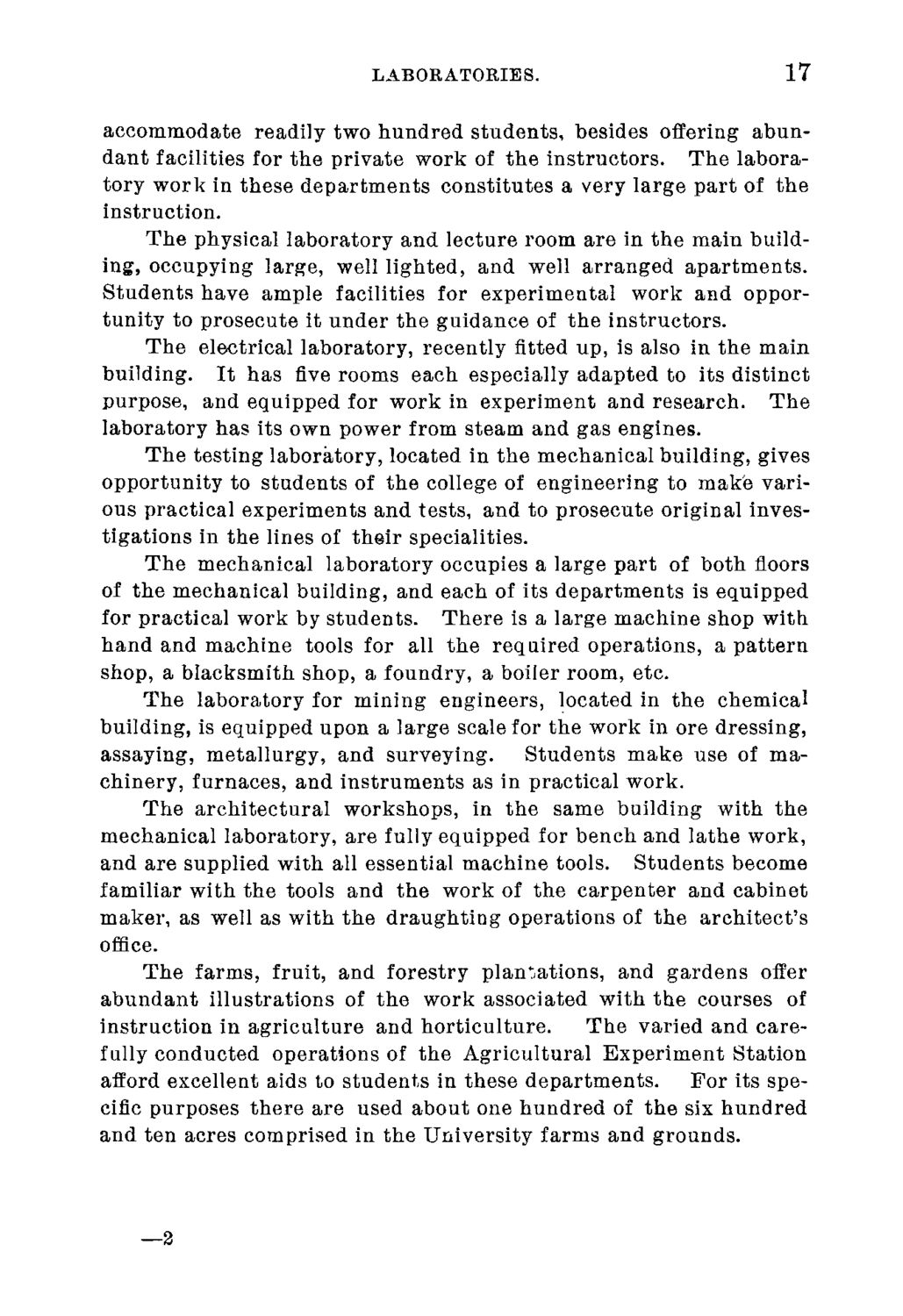| |
| |
Caption: Course Catalog - 1891-1892
This is a reduced-resolution page image for fast online browsing.

EXTRACTED TEXT FROM PAGE:
LABORATORIES. 17 accommodate readily two hundred students, besides offering abundant facilities for the private work of the instructors. The laboratory work in these departments constitutes a very large part of the instruction. The physical laboratory and lecture room are in the main building, occupying large, well lighted, and well arranged apartments. Students have ample facilities for experimental work and opportunity to prosecute it under the guidance of the instructors. The electrical laboratory, recently fitted up, is also in the main building. It has five rooms each especially adapted to its distinct purpose, and equipped for work in experiment and research. The laboratory has its own power from steam and gas engines. The testing laboratory, located in the mechanical building, gives opportunity to students of the college of engineering to make various practical experiments and tests, and to prosecute original investigations in the lines of their specialities. The mechanical laboratory occupies a large part of both floors of the mechanical building, and each of its departments is equipped for practical work by students. There is a large machine shop with hand and machine tools for all the required operations, a pattern shop, a blacksmith shop, a foundry, a boiler room, etc. The laboratory for mining engineers, located in the chemical building, is equipped upon a large scale for the work in ore dressing, assaying, metallurgy, and surveying. Students make use of machinery, furnaces, and instruments as in practical work. The architectural workshops, in the same building with the mechanical laboratory, are fully equipped for bench and lathe work, and are supplied with all essential machine tools. Students become familiar with the tools and the work of the carpenter and cabinet maker, as well as with the draughting operations of the architect's office. The farms, fruit, and forestry plantations, and gardens offer abundant illustrations of the work associated with the courses of instruction in agriculture and horticulture. The varied and carefully conducted operations of the Agricultural Experiment Station afford excellent aids to students in these departments. For its specific purposes there are used about one hundred of the six hundred and ten acres comprised in the University farms and grounds. —2
| |